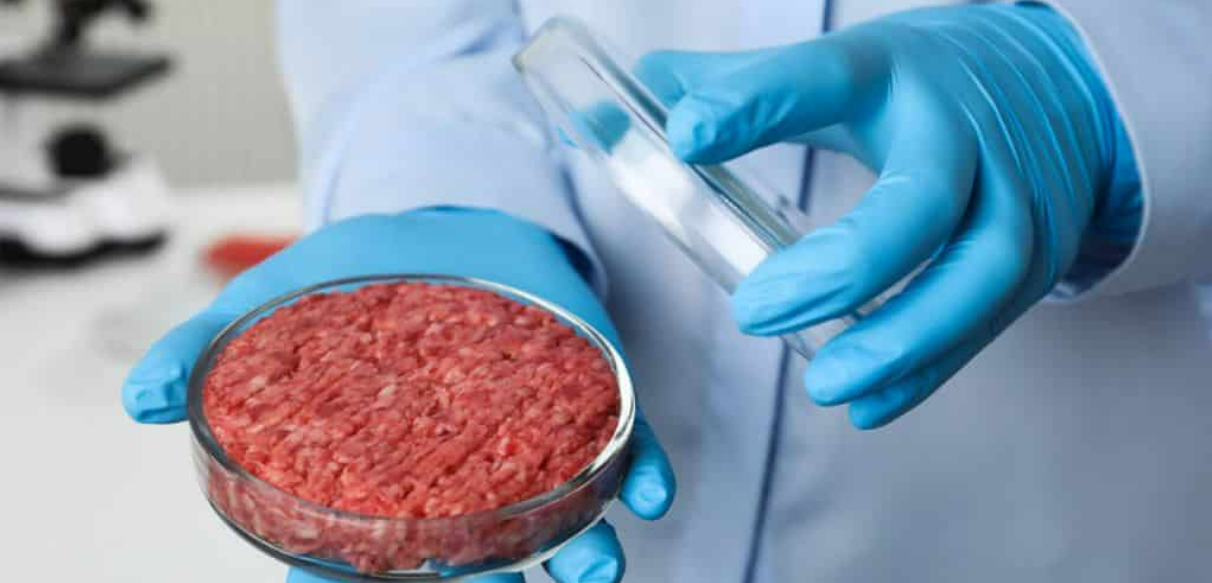Having been two centennials since Frankenstein warned the world about utilizing science without regard for ethical and societal consequences, the idea of lab-grown meat has since been materialized by several start-up companies and private laboratories. We’ve come to an era where science that defies the laws of nature is now possible. Nonetheless, with the first cultured meat being produced in 2013, the science behind the production process is still relatively new. Thus, this cell-based meat is not without its flaws despite the benefits their proponents advertise. By using terms like clean, healthy, or slaughter-free meat, consumers are led to believe that they can consume this product without that subconscious guilt––yet, that in itself is misleading.
The primary component of the production process is the usage of stem-cells from the respective animal. These stem cells are undifferentiated and have the capabilities to multiply and differentiate into other types of cells; in this case, into fat, or muscle cells. Upon getting a biopsy of an animal, these cells are able to multiply by being fed the necessary nutrients. The nutrients given to these cell cultures often vary across producers, yet one nutrient-rich source remains controversial. Fetal bovine serum is a nutrient-rich liquid that has been one of the main go-tos for providing nourishment to these cell cultures. This serum is obtained from extracting the blood of cow fetuses, at the cost of slaughtering their mother. The usage of this serum is often rationalized by comparing the fewer cows required to produce the same amount of meat. But fortunately, many companies have been pushing for more synthetic means of nourishment and some have already succeeded.
Above getting the necessary nourishment, these cell cultures must be worked on in order to produce the desired flavor and texture profile. However, the technology used to produce cell cultures is expensive alone, and the cost of further research and machinery to improve the eating experience gradually adds up. Ideally, one facility must be capable of producing about 10 kilotons of cultivated meat annually, hence hosting about 2.3 million liters of cell cultures, which calls for a lot of machinery. According to Food Navigator, if cultured meat companies aim to supply 10% of the worldwide meat market by 2030, 4,000 factories must be operating at full-capacity by this deadline. This endeavor could cost upwards of $1.8 trillion. In retrospect, the worldwide meat industry is currently valued at $867.3 billion, and rather than costing $22,000 for one kilogram of cultured meat at the production’s current state, it could cost $5.66 if this goal is met. Surely, with the right investors as well as the potential government funding these meat companies are vying for, this goal may be attainable but only with a small margin for error, if any at all.
The one issue with these cell cultures is the lack of an immune system like genuine animals. A single bacteria or virus can compromise a cell culture since the growth rate of animal cells is significantly slower at 24 hours compared to 20 minutes for bacterial cells. Thus, in order to prevent contamination and the consequential waste of cultures, these facilities must meet pharmaceutical-grade standards. That means a facility with a $40 million to $50 million Class 8 clean room that must replace the air inside at a rate of 10 to 25 times an hour, rather than two to four times for a typical building.
Bearing these costs in mind, it’s clear that the cultured meat industry remains as a topic of debate, with many considering it to be a gamble while others continue to be optimistic. Even so, these long-term and high-stakes investments could pave the way for a more environmentally-friendly meat industry––as ironic as it sounds. According to The Beet, the meat industry has been responsible for 14.5% of manmade carbon emissions as well as contributing to the deforestation of the Amazon rainforest. On the other hand, cultured meat causes up to 92% less global warming, uses up 95% less land and 78% less water. Furthermore, with the power to genetically manipulate these cell cultures, companies could modify the nutritional profile to make it significantly healthier than conventional meat. Thus, as the cultured meat industry eventually scales and becomes more accessible to the general public, the environment will be protected.

Be First to Comment